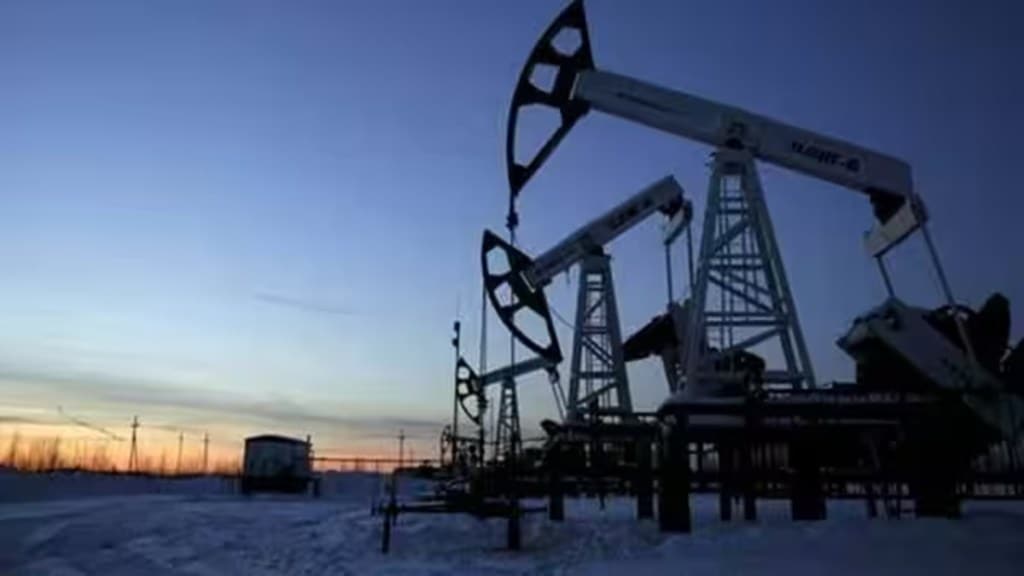With the average price of Indian basket of crude likely to significantly overshoot the budgetary projection of $85/barrel, official estimates of key macroeconomic numbers may go awry. The impact will be higher for the current account and “imported inflation” while implications for the estimated budget deficits would be limited.
The relentless rise in the brent crude prices, which crossed $93-a-barrel mark for first time in 2023 on Thursday, if sustained through March 2024, the current account deficit (CAD) could end up being significantly higher than level analysts expected earlier.
As a fraction of the gross domestic product (GDP), the CAD for FY24 might cross 2%, even crude averages at $95/barrel in the year. The CAD would still remain under control, as a contraction in exports may continue to be accompanied by an equally sharp fall in imports.
However, if imports of other commodities like edible oils and coal, besides capital equipment for an industry on the cusp of an investment cycle turn to be buoyant , the merchandise trade deficit could widen, causing significant pressure on the current account.
Costlier crude will impact inflationary pressures, in terms of imported inflation. However, the effect would be muted, as pass-through of the spike to retail level may not materialise.
However, as crude is not only linked to pump prices of auto fuels but also to naptha, gas other industrial feeds, its price rise will also affect a broad range of products in the petrochem-to-plastics value chain, fertilisers like urea, metals and so forth. India imports 20% of its urea requirement, and since the prices of this commonly used fertiliser at the retail levels are fixed, higher costs could jack up the fertiliser subsidy.
India’s CAD fell sharply to 0.2% of GDP in Q4FY24 from 2% in the previous quarter and 1.6% in the year-ago period, thanks to a steep sequential reduction in merchandise trade deficit and buoyant services exports. The key external deficit, which expanded to a worrisome 4.4% in the second quarter of last fiscal, has since moderated, primarily because merchandise imports too began contracting since December, somewhat counterbalancing the contraction in outbound shipments.
Goods trade deficit stood at an elevated $57.6 billion in the April-June quarter, and at $20.67 billion in July.
The WPI inflation data released on Thursday already showed rising price pressures of petroleum products. The inflation of fuel and power rose to (-)6.03% in August from (-)12.79% in July, and sequentially the index rose by 3.0%.
“Fuel and power inflation came in at (-)6% YoY, almost half of what it was in July. However, higher global oil prices at USD $91/bbl in September should impart upward pressure in coming months,” ICICI Bank economists said in a research report. “While retail inflation may be insulated because of no change in pump prices, non-controlled prices should have a pass-through on domestic margins and inflation,” they added.
The Reserve Bank of India has projected Consumer Price Index inflation to average 5.4% in 2023-24. For its projection, the central bank has assumed the price of India’s crude oil basket to average $85 in FY24. The Indian basket of crude oil represents a derived numeraire comprising sour grade (Oman and Dubai average) and sweet grade (Brent) crude oil.
According to RBI’s Monetary Policy Report for April, every 10% increase in crude oil price above the baseline pushes CPI inflation by 30 basis points. Based on the data, Financial Expresses has projected CPI inflation for FY24 in different scenarios (see chart).
As 85% of India’s domestic crude oil consumption needs is met through imports, sustained price rise may effect the country’s current account deficit. “India heavily depends on the import of crude oil to meet its needs, higher crude oil prices can lead to a higher import bill. This will negatively impact the trade balance as India will have to pay more for the same quantity of crude oil,” said Nirpendra Yadav, Senior Commodity Research analyst, Swastika Investmart Ltd. ICRA’s Senior Vice President Prashant Vasisht has projected crude oil price to stay between $85 to $95 in September-March.
Economists at IDFC FIRST Bank have projected CAD in the current fiscal year, based on different crude oil projections (see chart). In FY22, the country’s CAD was 2% of the GDP.

